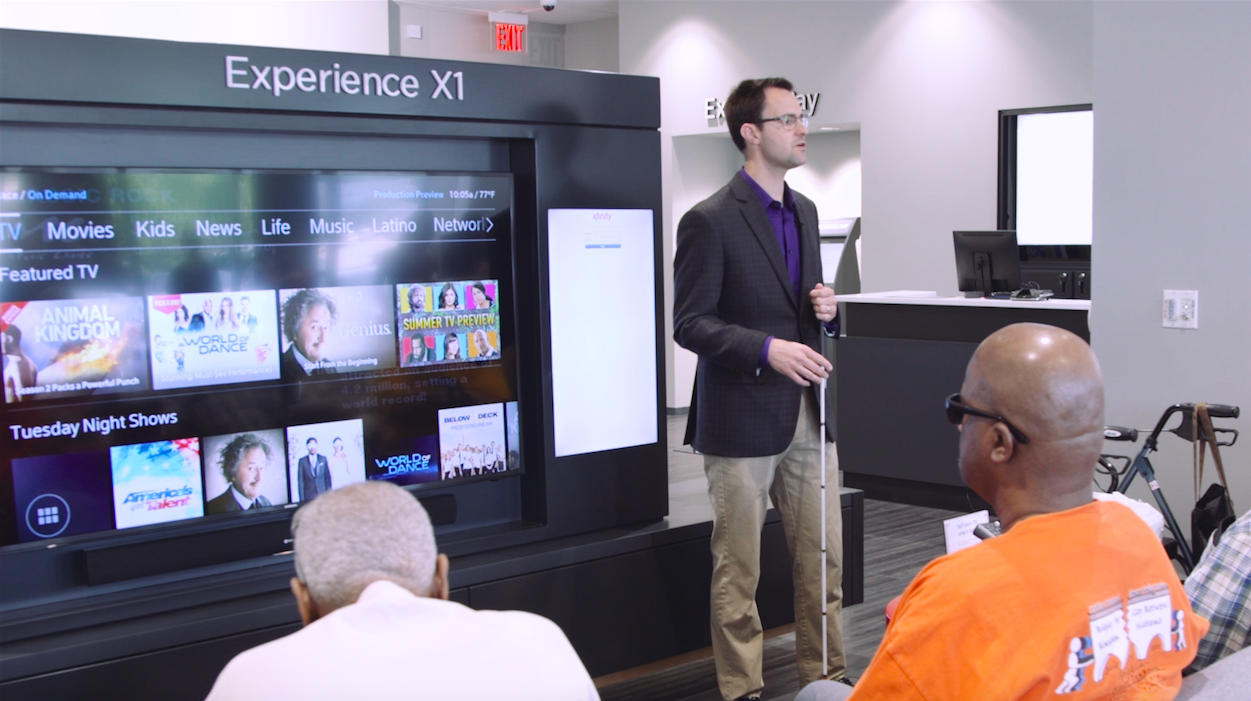Enriching the customer experience for people with disabilities

Comcast made a commitment to ensuring its products and services are accessible to all our customers, across all ranges of ability, when it hired Tom Wlodkowski as Vice President of Accessibility in 2012. His team has been focused on enhancing usability with a mission to enrich the customer experience for people with disabilities.
Joel Moffatt, Customer Experience Lead on Comcast’s Accessibility Team, was in Pittsburgh last week to demonstrate some of the accessibility features we’ve built into Xfinity’s X1 platform for clients of the Beaver County Association for the Blind. During an event at the new Xfinity Store at the Point at North Fayette, Moffatt displayed the functionality of tools like the X1 Voice Remote and the Talking Guide, a voice-enabled TV menu and interface. He also demonstrated how to find and use video description services to help make programming accessible for blind and visually impaired customers.
The lively session included a Q&A with about 20 clients of the association, who demonstrated an appreciation of Comcast’s efforts and quickly adapted to the options available to them once they began their own hands-on tryout of the X1 and its Voice Remote. Moffett also described some of the new functionality coming to X1, and the event concluded with Comcast presenting a check to the association’s program director, Jennifer Thomson.
Since 2013, the Comcast Accessibility Lab in our Philadelphia headquarters is a place where developers collaborate to create accessible products and features that can be integrated into our existing platforms. The lab demonstrates how people with differing abilities interact with today’s mainstream entertainment, mobile, and web interfaces.
“It is essential for us to consider accessibility at all stages of product development, so that we can deliver a truly inclusive user experience,” said Wlodkowski. “Retrofitting accessibility support into an existing product can be costly and often leads to a sub-par experience.”
The X1 platform is a shining example of this principle put into practice. In 2014, Comcast launched the industry’s first voice-enabled television user interface, revolutionizing the way XFINITY TV customers navigate the X1 platform. With Voice Guidance, the X1 Talking Guide reads aloud selections from the X1 menu such as program titles, network names, and time slots, as well as DVR and On Demand settings, giving our customers who are blind or visually impaired the freedom to independently explore and navigate thousands of shows and movies. A simple voice command such as “show me NBC” allows viewers to find their favorite channels or programs quicker.